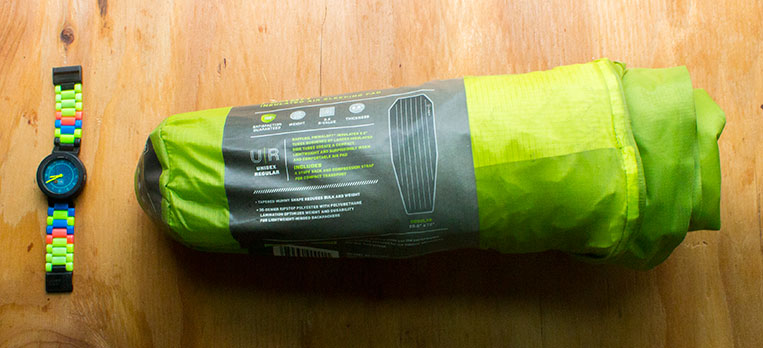By Billy Ulmer, author of the Life in a Tiny House Ebook.
A tricky question we face as members of a consumer society is not, “To buy or not to buy?” But, “How can I have access to what I need?” Shopping might be the most common means to that end, but it’s only one of many. You can buy (new or used), but you can also trade, repair, rent or borrow. One of my goals for my Unshopping Challenge, the month that I tried not to buy anything new, was to try some of the access methods I don’t use often enough, and figure out when each method makes the most sense.
How to Choose?
Renting and borrowing came up frequently in the interviews I did for the Life in a Tiny House Ebook. When people can’t fit one of everything they ever need in their home, they find ways to get what they sometimes need, just when they need it. Repairing didn’t come up as often, but for many it’s a part of that same ethic: reduce stuff, reduce waste.
I wanted to conclude my experience with the challenge in a way that would guide my future decision making, and potentially be helpful for others as well. Instead of writing a blow-by-blow account of my month in purchasing, I made a flowchart that sums up what I really ought to do, when I’m at my most thoughtful. This includes some of my most common emotional stumbling blocks: Thinking I should buy something when I really just want to try it out, and thinking I should toss something out and replace it when I really just wish it worked like it used to. What do you think, does this feel right to you?

Bringing Fixing Back
Two of my primary goals for the month were:
- Have something repaired
- Admit what can’t be repaired, and get rid of it.
When things break, I usually hang on to them with the noble but far-fetched intention to fix them up. Like my book-hoarding instinct, I thought that as long as I kept it, it could theoretically be fixed, which meant that I hadn’t yet wasted my money, while throwing it out was admitting defeat. All month I held on to the expensive but unfixably-leaking sleeping pad I bought for camping. I even asked an expert, and they told me it was doomed. But it took until just before I typed this sentence to actually put it in the trash. Some things can’t be saved, and you have to move on.
Do you know what can be fixed extremely easily? Dull kitchen knives. My Martha Stewart “Kmart Collection” knives are surprisingly awesome, but ten years of use have taken a toll. I knew didn’t want to go through the effort of shopping for totally new “good knives,” because I already know these are good when they’re sharp.
Yet getting things repaired can feel a little risky. Car repairs are almost universally feared because most of us don’t really know how cars work, and we’re afraid we’ll be taken advantage of by the people who do. I know how a knife works: it’s dull, it should be sharper. So I wasn’t afraid to be grifted, but I think I was afraid to be judged for having Kmart knives. In a consumer society, we’re almost expected to toss out the old and upgrade to the new model. I once brought a cheap but sentimental watch to a very fancy watch repair shop, and the repair guy looked at it for two seconds before shaking his head and passing it back to me without ever speaking to me or making eye contact. I’ve retained the icky feeling of having my possessions judged as unworthy of repair, but I also really wanted to be able to chop vegetables again, and not just mush them apart. So I found a knife sharper on Yelp that had great reviews, and brought in my beloved Kmart knives.

She did warn me, non-judgmentally, that knives like mine wouldn’t hold a sharpened edge for as long as a higher-end knife, but I felt educated, not chastised. And thirteen dollars and a couple hours later, I can cut ginger again! You name it, I’ll slice it! This is the joy of a repair. No waste, no re-shopping for the same thing. Just the magical moment when the object you know and love can be its best again.
For me, taking the Unshopping Challenge was an opportunity to pay more attention to my relationship to the objects that surround me. I wasn’t sure I would actually succeed in buying nothing new for the whole month, and I didn’t – I bought a camp stove, and a kitchen faucet. But I definitely succeeded in learning some practical steps I can take to make my material and emotional life work together better. After all, every decision is an emotional decision, so factors like guilt and forgiveness and cultural traditions have a huge influence on what we do. We can only change what we do if we pay really close attention to our habits, and bring them up to the surface with our conscious behavior. Mini-challenges and DIY experiments like this are great for that. Then, it’s on to the real challenge: integrating what you’ve learned and doing something differently.
* * * * *
Check out the other posts in this series: How to Forgive Yourself for Buying Stuff You Don’t Need and How to Change Obligatory Shopping Traditions. Stay tuned to my mailing list to catch new posts, or check out my Life in a Tiny House Ebook for more inspiring stories of people building lives around what matters most to them.

